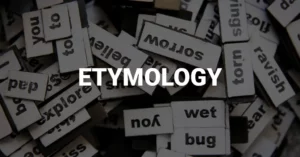AI Answer Evaluation Platform Live Now. Try Free Answer Evaluation Now
Assessing the Influence of Cultural Norms on Student Behavior and Discipline
Schools are social worlds. Students bring histories, languages, and cultural values into every lesson and hallway. These norms guide attention, speech, and trust. They also shape student discipline. When educators ask, how does culture affect learning? The answer touches routines, roles, and rules. Understanding culture in education helps teachers build fair expectations and effective responses to misbehavior. It also reveals strengths that diverse communities contribute to learning and care.

Workload, Norms, and Daily Conduct
Managing academic workload is one of the most common challenges today. Many learners struggle to balance their studies, personal responsibilities, and social expectations. Some face difficulties with motivation or time management. When pressure grows, discipline often suffers, assignments are late, attention fades, and stress builds. In such cases, students may seek extra support or online help with projects. Some turn to services that can do my project for me when deadlines overlap or focus drops. With the help of professional writers, students receive high-quality work completed on time. These situations highlight how discipline and responsibility connect deeply with cultural background and family expectations. In cultures where academic success defines identity, students may overwork themselves, while others may prioritize balance and well-being.
Authority, Voice, and the Meaning of Respect
Respect does not look the same everywhere. In some communities, students show deference by speaking softly and avoiding direct eye contact. Elsewhere, lively debate signals engagement and trust. A teacher might misread either style as defiance or apathy. Culture education reminds us to decode behavior before assigning blame. Ask, what are cultural values at play here? Does the student interrupt because quick back-and-forth shows enthusiasm? Or do pauses and silence convey seriousness? Calibrating to local meanings of “respect” reduces unnecessary discipline referrals and builds rapport.
Rule Systems Through a Cultural Lens
Rules embody assumptions. “No hats,” “Phones away,” “Eyes on me”, each rule carries an implied logic about safety, attention, or order. When rules conflict with identity markers or caregiving duties, compliance drops and tensions rise. Thoughtful rule design uses culture in education as a guide. Invite student voice when revising norms. Name the purpose behind each rule. Provide alternatives that preserve dignity. Clear, shared rationales reduce friction and strengthen student discipline because people protect what they help create.
Learning Approaches: Independence vs. Interdependence
Some students come from traditions that prize individual mastery. Others learn best through group talk and shared problem-solving. These differences show up in note-taking, pacing, and risk-taking on tasks. To the question, how does culture affect learning? consider assessment, too. Solo quizzes may understate collaborative thinkers’ strengths. On the other hand, open group projects can obscure who needs targeted support. Balance matters. Rotate formats. Name why you switch modes. In doing so, you align with multiple cultural values and reduce off-task behavior driven by mismatched methods.
When Norms Collide: Common Flashpoints
- Participation styles. Rapid exchanges vs. reflective pauses.
- Communication cues. Direct critique vs. face-saving feedback.
- Time orientation. Strict punctuality vs. flexible start times.
- Space and touch. Personal distance rules differ.
- Help-seeking. Public questions vs. private check-ins.
- Conflict repair. Immediate apology vs. cooling-off periods.
Each flashpoint can trigger classroom misreadings. A culture education lens reframes these moments as teachable, not punishable.
Positive Effects of Cultural Diversity on Conduct
Diverse classrooms widen the menu of pro-social skills. Peer mentoring traditions promote responsibility. Community storytelling builds listening norms. Collective pride reduces bullying and increases bystander action. When teachers surface these strengths, student discipline becomes preventive. Routines anchor the day; rituals honor belonging. Students follow rules they perceive as fair, relevant, and culturally legible.
Risks and Negative Effects to Watch
Culture can also rationalize exclusion or silence dissenting voices. Group loyalty may discourage reporting harm. Hierarchical norms can inhibit self-advocacy. Stereotypes “quiet Asian student,” “outspoken Black student,” “obedient refugee” distort judgment and fuel biased referrals. To keep discipline just, educators should audit patterns. Who gets sent out? For what reasons? Which classes show gaps? Data, dialogue, and coaching expose habits that hide under the banner of “normal.”
Practical Moves for Culture-Smart Discipline
- Open the year with norms built together. Explain the “why” behind rules.
- Map participation options. Offer think-time, turn-and-talk, and debates.
- Teach code-switching as a skill. Show when different communication styles fit.
- Use restorative responses. Center impact, repair, and reintegration.
- Diversify assessment. Mix individual and collaborative tasks.
- Call families as partners. Ask about home routines and expectations.
- Coach language. Replace “defiant” with specific, observable descriptions.
- Study your data. Track who gets consequences and adjust supports.
These moves integrate culture in education with consistent boundaries. They also answer, what are cultural values guiding our classroom? with concrete practice.
Building Staff Capacity
Isolated workshops fade. Real growth comes from routines: brief case studies in staff meetings, classroom walk-throughs with a culture lens, and peer observation cycles. Share scripts for difficult conversations. Provide translation support at family nights. Invite community leaders to co-design celebrations and conflict-repair protocols. Over time, shared language and aligned strategies reduce reactive discipline and increase trust.
Conclusion
Culture shapes attention, tone, and rules. It informs how students learn, how they read authority, and how they interpret consequences. When schools treat culture as a resource, not an obstacle, student discipline becomes relational and instructive. The question is not only how does culture affect learning? but also how we design systems that honor difference while upholding safety and fairness. With clear purposes, flexible methods, and community voice, culture in education strengthens belonging and behavior, every period, every hallway, every day.



